Hand Signals
Learn how hand signals help on the trading floor.
Hand signals – the sign language of futures trading — represent a unique system of communication that effectively conveys the basic information needed to conduct business on the trading floor. The signals let traders and other floor employees know how much is being bid and asked, how many contracts are at stake, what the expiration months are, the types of orders and the status of the orders. The signals are the favored form of floor communication, especially in the financial futures pits, for three main reasons:
- Speed and efficiency. Hand signals enable fast communication over what can be long distances (as much as 30 or 40 yards) between the pits and order desks and within the pits themselves.
- Practicality. Hand signals are more practical than voice communication because of the number of persons on the floor and the general noise level.
- Confidentiality. Hand signals make it easier for customers to remain anonymous, because large orders do not sit on a desk, subject to accidental disclosure.
Hand Signal Development
Hand signals began being used extensively at CME in the early 1970s, after the Exchange created the International Monetary Market (IMM) and became the first U.S. futures exchange to offer financial (rather than commodity-based) futures. Although speed had long been a key element in futures trading, it became even more important when financial futures entered the trading scene. Why? Because traders discovered they could take advantage of arbitrage opportunities between CME and other markets if they could trade quickly enough. (Arbitrage refers to the simultaneous purchase and sale of the same or an equivalent commodity or security to profit from price discrepancies. When price discrepancies emerge in the marketplace, the arbitrageur buys/sells until it is no longer profitable, or until prices are back in equilibrium.) Hand signals met the need to speed up communication in the fast-moving financial futures pits.
This presents the signals most commonly used at CME. Some are unique to particular pits on the CME floors. But take note: Some signals may mean one thing in a certain pit, while a similar signal may mean something entirely different in another pit.
Buy / Sell
When indicating you want an offer to buy (signaling a bid), the palm of the hand always faces toward you. You can remember this by thinking that when you’re buying, you’re bringing something in toward you. When making an offer to sell (offering), the palm always faces away from you. Think of selling as pushing something away from you.
| Buy | 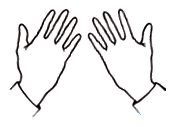 |
| Sell | 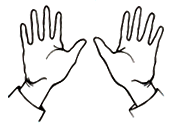 |
Your palms face you when you are signaling a “Buy”, and face away from you when you are signaling a “Sell.”
Price
To signal price, extend the hand in front of and away from the body. For the numbers one to five, hold your fingers straight up. For six through nine, hold them sideways. A clenched fist shows a zero or “even.”
Note: Price signals indicate only the last digit of a bid or offer. For example, a “0” signal may refer to a “40” bid.
| One |  |
| Two |  |
| Three |  |
| Four |  |
| Five |  |
| Six |  |
| Seven |  |
| Eight |  |
| Nine |  |
| Even |  |
Quantity
To indicate quantity – the number of contracts being bid or offered – touch your face.
To signal quantities one through nine, touch your chin.
To show quantities in multiples of 10, touch the forehead.
To show quantities in multiples of 100, make a fist and touch the forehead.
| One | 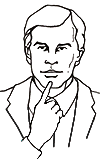 |
| Ten | 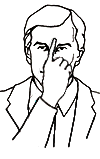 |
| Seven | 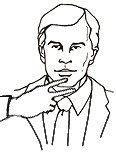 |
| Ninety | 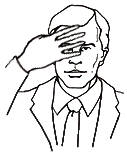 |
| One Hundred | 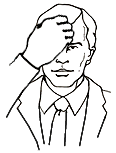 |
| Five Hundred | 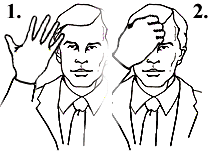 |
| Seven Hundred | 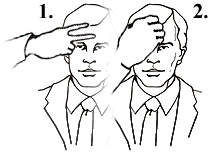 |
Additional Lessons
- Futures Exchange
- Contracts Traded
- Supply and Demand
- Fundamental Analysis
- Technical Analysis
- Orders in the Pit
- Trading Pit
- Risk Management
- Hedgers & Speculators
- Options on Futures
- Reading Quotes
- GLOBEX
- Hand Signals
- Expiration Months
- Futures Contract
Contents Courtesy of CME Group.